Since its modest beginnings a century and a half ago, Robbe & Berking Silver Manufactory has become one of the world’s leading and most distinguished silver suppliers for silver flatware and hollowware.
Master silversmith and company founder Nicolaus Christoph Robbe (1843-1916), Fig. 1, was born in Flensburg, the northernmost town in Germany’s province Schleswig- Holstein. He learned the art of silversmithing in a master’s workshop in the Katsund section of Flensburg, an area non- existent today.
Robbe & Berking´s founder Nicolaus Christoph Robbe (1843-1916) settled in Flensburg and opened a small silversmithing shop in 1874. 150 years later the company is a world-renowed silver manufacturer. Photo courtesy of Robbe & Berking
From 1460 until 1864, Flensburg belonged to the Kingdom of Denmark. But after years of conflict between Denmark and Germany, Flensburg changed nationalities and in the sixteenth century, Flensburg became one of the most important northern European trading settlements with Scandinavian countries, being frequented by international tradesmen and merchants who dealt in luxury items such as silver.
[1]
By the mid-nineteenth century, after the Second Schleswig War in 1864, the province of Schleswig had become part of the Kingdom of Prussia (Schleswig Peace Treaty, 1864). By 1920, and after Germany’s defeat in World War I, the northern parts of the Schleswig province (Flensburg’s northern neighborhood) was ceded to Denmark, whereas the southern neighborhoods continued to be part of Germany (Schleswig Treaty 1920).
[2] Today, Flensburg, situated on the Flensburg Fjord, an inlet of the Baltic Sea, is only four miles from the Danish border (Fig. 2).
Founded by Danish settlers in the thirteenth century, Flensburg is the northern most town in Germany’s province of Schleswig-Holstein. (With the exception of the town Westerland on the island of Sylt.) It lies on the tip of the Flensburg Fjord, an inlet of the Baltic Sea, on the Danish border. Today, Flensburg’s population is slightly over 90,000. Photo credit: “Sønderjylland” by Malte89, Licensed under CC BY-SA 3.0 via Wikimedia Commons.
After Robbe completed his apprenticeship, he became a journeyman, traveling throughout Germany for several years to cultivate and refine his skills at different silver workshops. He received his master’s title at the age of thirty-one, and permanently settled in Flensburg. In 1874, he founded a silver workshop that included a small display window for sales on Flensburg’s Angelburger Street.
In 1875, Robbe married Luise Singhofen and eventually had four children: two daughters, Henriette and Dora Robbe, and two sons, Arnold (1883- 1956) and Johannes Robbe (1913-1989).
During his first twenty years of business, Nicolaus Robbe worked alongside his wife Luise who helped with creation and polishing silverware, while Robbe produced popular items of the day, from silver cutlery and wedding bands to other small jewelry pieces, in addition to accommodating repairs.
Robbe’s workshop enjoyed a steady business growth during this time, and in 1896, Robbe hired his first employee, the journeyman Peter Wohlmacher.
[3]
Robbe’s business prosperity increased and in 1897, he hired a second employee, the young master silversmith Robert Berking (1872-1908), Fig. 3, who fell in love with Robbe´s daugther Henriette. Berking was from Braunschweig, a town in Germany’s Lower Saxony province. One year later, Berking and Henriette Robbe married.
Robert Berking (1872-1908) joined Nicolaus Christoph Robbe and married his daugther Henriette Robbe. Photo courtesy of Robbe & Berking.
Berking brought to his marriage a substantial amount of inherited funds from his family, which enabled him to invest and purchase one-half of Robbe’s silver business, thus creating the long-lasting partnership of Robbe & Berking, today in its 5th family generation.
Berking had an entrepreneurial talent, was technically and artistically inclined, and is known for developing the company’s first silver cutlery designs. He designed the Hermitage cutlery pattern, a classic northern design (Fig. 4).
Hermitage was one of Robbe & Berking’s first flatware patterns developed by master silversmith Robert Berking (1872- 1908). This autochthonic pattern combines chiseling, engraving and hand-hammering techniques. Due to its heritage, the Hermitage pattern was reissued in 2014 in remembrance of the company’s 140th anniversary. Photo courtesy of Robbe & Berking.
In 2014, the Robbe & Berking firm reissued Berking’s
Hermitage pattern as a historic remembrance to mark the company’s 140th anniversary. What distinguished the
Hermitage pattern is the combination of chiseling, engraving, and hand-hammering techniques visible on the flatware’s handles. The pattern created a gracefulness by its elegant shape and structure. The spoon’s transition section (the space between the handle and the bowl) is thinly worked, elongates in trapeze shape, and ends in a
trefid motif at the top of the handle with the gable pointing down. The two horizontal lines on the handle are found on other designs from northern Europe.
[4]
Following the
Hermitage pattern, Berking designed the
Ostfriesen (East Frisian) pattern (Fig. 5), which became another notable design and further identified the firm as a silver manufacturer from northern Europe. Because of
Ostfriesen’s curvilinear form and the hand-engraved design with round contours, it is distinctive to the Nordic countries.
[5] Historically, hand-engraving is a technique used to carve or incise a specific design with the use of an engraving needle (
Stichel) into the silver piece. Berking’s successful
Ostfriesen pattern was copied by other nineteenth-century German silver manufacturing companies, such as Koch & Bergfeld, M.H. Wilkens, Kropp, and Hanseatic Silverware. With the firm’s success, other patterns ensued.

Master silversmith Robert Berking (1872-1908) designed the Ostfriesen (East Frisian) pattern. This pattern is Danish inspired and presents a curvilinear handle with an elaborate filigree engraving of a plant vine and leaves along with C-shaped scrolls. Photo courtesy of Robbe & Berking.
This year (2024), for its 150th anniversary, Robbe & Berking reissued its legednary mid 20th-century classic pattern, Metropolitan (Fig. 6). Metroplitan goes back to the Modernism era, a transformative movement from the beginning of the 20th century that challenged traditional artistic conventions and introduced new forms, materials and techniques. By breaking with figurative art, integrating technology and influencing architecture and design, modernism left an indelible mark on the artistic landscape.

Robbe & Berking revived the Metropolitan cutlery pattern, a legendary 20th century classic for its 150th anniversary in 2024. The Metroplitan pattern is based on Modernism, a transformative movement beginning in the early 20th century that challenged traditional artistic conventions and introduced new forms, materials, and techniques. By breaking away from figurative art, integrating technology, and influencing architecture and design, Modernism left a permanent mark on the artistic landscape. Architects such as Le Corbusier (1887-1965), Albert Frey (1903-1998), and Ludwig Mies van der Rohe (1886-1969) had a significant influence on modern architecture worldwide through their work and teachings. Their modernist designs, challenged the principles of functionalism and minimalism, emphasizing clean lines, open spaces, and the use of modern materials. Their approach transformed the environment and shaped the design of buildings, furniture, and everyday objects.
The Metropolitan cutlery pattern perfectly embodies this style, with its sleek lines and sophisticated aesthetic. Its re-edition celebrates Robbe & Berking’s dedication to craftsmanship, paying homage to the Modernist vision that continues to inspire and influence art and design today. Photo courtesy of Robbe & Berking.
Architects such as Le Corbusier and Ludwig Mies van der Rohe championed the principles of functionalism and minimalism, emphasizing clean lines, open spaces and the use of modern materials. This approach changed the built environment and shaped the design of buildings, furniture and everyday objects.
The modernism legacy continues to inspire and shape the creative endeavors of today, reminding us of the power of innovation and the enduring relevance of the movement. Metropolitan is an hommage to the classic mid 20th century style that has reached a historic status and revival today.
Given Robbe & Berking’s location and cultural setting, decorative motifs were not only inspired by German fashion and taste, but more so by Scandinavian style. Because Flensburg was once part of Denmark, the town continues to have a large Danish population, and Robbe & Berking’s designs continue to be influenced by the pure and clean lines of Scandinavian design and taste today.
Danish designs and fashion are inclined to be more utilitarian than ornamental. Danish silver flatware and hollowware display an emphasis on the quality of the precious metail, its shape and function, rather than decorative motifs. Examples of nineteenth-century Danish silversmiths include Anton Michelsen (1809-1877), the only Danish silversmith to exhibit at the 1855 Paris World Exhibition, and Arendt Dragsted (1821-1898), who worked with Michelsen before opening his own silver workshop in Copenhagen in 1854. Peter Hertz (1811- 1885), a jewelry designer who supplied the Danish royal court and Georg Arthur Jensen (1866-1935), one of Denmark’s most distinguished silversmiths are further examples of Danish silver style; and Holger Kyster (1872-1944) who traveled widely and studied abroad in Germany and Switzerland before settling in Copenhagen.
Examples of Danish influence on Robbe & Berking designs featuring utilitarian patterns are visible in the plain flatware shapes that incorporate a simple surface with hand-hammered decorative motif. An example is the cutlery pattern Martelé (Fig. 7). Martelé originates from the French verb marteler, to hammer, and describes a technique where hammer marks are left in the finished piece of silver. The marks are neither buffed nor polished and produce an uneven wavering surface, which reflects the natural light. Superior workmanship is necessary to produce a consistent uneven martelé surface. Examples of this hand-hammered pattern have continued for a century and a half and are still being manufactured today.

This Martelé pattern involves an advanced finishing technique with the use of a hammer (“marteler” in French refers to hammering). Depending on the type of hammer (ball peen hammer, flat nose hammer, rawhide hammer etc.) as well as the hammer’s face (round, oval, pointed, flat etc.), the indentions are transferred to the surface of the silver and create an uneven surface, which reflects the natural light. Photo courtesy of Robbe & Berking.
Other noted Nordic silversmiths used the same technique. For example, in 1906, the Danish silversmith Georg Jensen applied it to his hand-hammered creation of the Continental silverware pattern (Fig. 8).
Georg Jensen’s Continental silverware pattern is another example from the Nordic countries that applies the martelé technique in his cutlery. Photography: © Georg Jensen.
The turn of the twentieth century marked a new era for Robbe & Berking. Robert Berking began traveling and visiting clients through Germany to present new designs and seek commissioned orders. His travels proved to be successful not only because of the quality of his cutlery but because the designs were recognized, appreciated, and were in demand. As the company grew, they enlarged their workforce and by 1907, Robbe & Berking employed seven master silversmiths.
[6]
During that same year, the family purchased land on Sophien Street in Flensburg and built a larger building. They modernized their silver workshop and updated their tools and machinery. The new building consisted of a two-story house with two apartments in which Berking lived with his family and his in-laws, the Robbe family. During this period, there was a progressive era of technical and technological advances throughout Europe, “the pioneer years of industry sales ... with emphasis on ... advertising for products of the consumer goods industry.”
[7] The firm introduced the display and distribution of their latest silver cutlery patterns through advertisements in newspapers, magazines, and leaflets, in addition to client visits.
For the following few years, company growth was positive and on the rise when suddenly in 1908, Robert Berking drowned at the age of thirty-six.
[8] Immediately after his death, his wife, Henriette, took charge and managed the silver workshop along with her 65-year-old father and company founder Nicolaus Robbe. Henriette divided her fifty-percent share between her two sons, Theodor (1899-1964) and Nicolaus Berking (1900- 1947). Eight years later, Nicolaus Robbe died and Henriette’s brother, Arnold Robbe, who inherited their father’s fifty-percent share, became equal partners in the business with the Berking sons Theodor and Nicolaus.
Denmark’s neutral status during World War I resulted in the country being spared from the most devastating effects of the war. With the signing of the Schleswig Treaty in 1920, Flensburg was divided.
[9] Denmark introduced special import rules and regulations through the Exchange Control Actof 1932, which strictly controlled imports, making trade of silver flatware and hollowware between Germany and Denmark nearly impossible.
[10] Professor of Modern History at the University of Southern Denmark, Knud Jespersen reports, “[...] any use of foreign currency had to be approved by the office, and so by the state, and was only granted to companies if they could demonstrate that the imports they required could be considered essential and to the benefit of society. This meant that anything which constituted a competitive threat to Danish products could be kept out of the country. The system also allowed the government to set up extensive bartering agreements with other countries.”
[11] Although Germany also introduced new export duties that imposed a low two- to four-percent export duty on silver and silver objects during that period, these rules and regulations caused economic hardships for the Robbe & Berking firm.
[12]
Theodor Berking continued to improve and cultivate his knowledge by enrolling in a two-year traineeship at M.H. Wilkens in Bremen, one of Germany’s largest silver and silver-plated manufacturing companies that has shut its doors this year. In 1925, he returned to Flensburg and the family business, and took leadership of the firm from his mother Henriette and his uncle Arnold Robbe. A year later, Theodor Berking was awarded his silversmith master’s title with a commendable mention on his certificate. In 1928, Theodor Berking married Margarethe Tranekjer and had two sons, Robert Berking and Knud Berking, born in 1931 and 1934 respectively.
During the World War II era, the company’s hardships continued when the majority of the firm’s employees were drafted into military service. The demand for silver cutlery immediately fell and primary precious metals became unattainable. Due to the lack of qualified silversmiths, the firm began employing women for silversmithing tasks such as polishing and soldering. Despite the misery of the war and the poor economy in post-war Germany, the firm survived and continued manufacturing shortly after the reforms of 1945.
Arnold Robbe retired from the company’s management in the 1950s and after his death in 1956, his fifty-percent share of the company was inherited by his wife, Lili Robbe and their two sons, Kurt Robbe (1910-1987) and Johannes Robbe (1918- 1989). During the mid-1950s, with the economy on the rise, the firm constructed a second silver manufacturing building on “Zur Bleiche” street in the Flensburg’s southern district, where the firm’s headquarters continue today.
A year later in 1957, Theodor Berking’s son, Robert Berking was elected chief executive officer of the company. His business-oriented education and training at the renowned German silver manufacturer Bruckmann & Söhne in Heilbronn (founded in 1805) prepared him for what was a successful career in executive management that lasted until the mid-1990s.
During his forty years of tenure, Robert Berking introduced many of his own designs, including Isabell, Brigitte, Mercedes, City, Royal (9a), Alt- Copenhagen (9b), Navette (9c), and Dante (Fig. 9d).
This page from a pattern book displays a selection of the following sample patterns: Isabelle, Brigitte, Mercedes, City and Royal. All were designed by Robert Berking (b. 1931) and present a design that focuses on simplicity rather than décor. Photo courtesy of Robbe & Berking.
The elegant pattern of Alt-Kopenhagen (Old Copenhagen) is a twentieth-century design by Robert Berking (b. 1931) and features a filigree engraving of different herbs, such as thyme, saffron, rosemary, and star anise on the back of each individual piece. This pattern is suited well for table settings à la française. Photo courtesy of Robbe & Berking.
Robert Berking (b. 1931) designed the Navette pattern in the 1950s. The name of the design was inspired by the pointed oval cut of a precious stone called the “navette cut.” The end of the handle is also reminiscent of a lily-shaped form ending in a small sculptured cup. Photo courtesy of Robbe & Berking.
Dante is yet another Robert Berking twentieth-century design that features a plain simple, and elegant form. The details of this pattern have been inspired by the full moon, the bowl of the spoon reflecting the shine of a full moon. Photo courtesy of Robbe & Berking.
With the onset of the 1980s, various silver designers worked for Robbe & Berking. One of Germany’s most renowned silversmiths, Wilfried Moll (1949-2020), who has been creating and producing hollowware and flatware for many years, began designing for Robbe & Berking. Silversmith Moll designed three contemporary and world-renowned cutlery patterns for Robbe & Berking. The Alta pattern (Fig. 10), based on Bauhaus style, which triumphs form over ornament, was designed in 1986 and won several awards. Moll´s design evolved into an entire Alta collection (Fig. 11). The form is simple without any ornamentation, highlighting the beauty of a modern utilitarian design.

The Alta pattern, designed by master silversmith Wilfried Moll (1949-2020), chooses form over ornament. The flatware pattern won the Design-Plus Award, Frankfurt, in 1984. The Alta hollowware pattern was awarded the “Form- 88 for Hollowware Award” (Form 88 für Tafelgeräte Preis) in 1988. Alta is based on the Bauhaus style, where simplictiy rules over décor. Today Alta is one of Robbe & Berking most renowned patterns and on display in various museums worldwide. Photo courtesy of Robbe & Berking.
This Alta tea and mocha service is part of the Wilfried Moll hollowware collection. It also focuses on simplicity and contrast between the wooden handles and the lustrous silver finish through which an elegant yet unpretentious design is achieved. Photo courtesy of Robbe & Berking.
Riva pattern (Fig. 12), created in 2000, was inspired by the form and craftsmanship of Italian Riva yachts. The plain, contemporary design displays a simple distribution and economy of silver, which in turn, creates an elegant expressive effect.
The Riva pattern was created by Moll in 2000. The design’s inspiration originates from the form of Italian Riva yachts (Feretti Group). The plain, contemporary design displays a simple distribution and economy of silver, which in turn, creates an elegant expressive effect. The restaurant of the Museum of Modern Art in New York and Eric Ripert´s restaurant Le Bernardin in New York both work with this Robbe & Berking pattern. Photo courtesy of Robbe & Berking.
The 2008 contemporary Sphinx pattern (Fig. 13) embraces the modern and sculptured design to feature the arrangement of an elongated shalow bowl in the spoon, elongated prongs in the fork and an elongated rounded blade in the knife. These exaggerated features give the design an unconventional appearance, the result being a sophisticated form that is not only visually and aesthetically pleasing, but thoroughly modern, also based on the Bauhaus style.
Moll designed the contemporary Sphinx pattern in 2008, a twenty-first century masterpiece. Sphinx features a pronounced curve of the mouthpiece that flows into an angular ultra-modern sculpted handle. Photo courtesy of Robbe & Berking.
The combination of Moll’s uncomplicated simplicity and utilitarian designs follow the fashion of form referred to as “functionalism,” an early twentieth-century aesthetic developed by American architect Louis Henry Sullivan’s formula “form follows function.”
[13]
Another designer who have been creative for Robbe & Berking is the Belgian-based Nedda El-Assmar. One of her designs is the Sterling silver (fruit) bowl with natural oval openings and an undulated border (Fig. 14). A design based on natural forms, combining elegance and palyfulness. The love spoons (Fig. 15) are an invention of El-Asmar that object are the love spoons when placed together, they form a rosebud. El-Asmar won numerous international awards and is today the senior lecturer at the Jewellery Design, Gold & Silversmithing department at the School of Arts PXL-MAD Hasselt, Belgium.
Belgian-based designer and silversmith Nedda El-Asmar designed this bowl that displays iregular oval openings and a naturally-curved border. This desgin came about through “strechting” of the metal from a flat sheet into a raised bowl. Photo courtesy of Robbe & Berking.
These sinuously curving Love Spoons, created by Belgian-based designer Nedda El-Asmar, seem entwined in a loving embrace. A perfect gift for an engagement, wedding or just a because of love. Photo courtesy of Robbe & Berking.
During the second half of the twentieth century, the international sales and distribution of Robbe & Berking’s silver cutlery spanned not only throughout Germany, but other European countries as well, including Switzerland, Austria, Belgium and Luxembourg, and soon thereafter the United Kingdom, Italy, and Spain.
Since 1997, Oliver Berking (b. 1962), the great-great-grandson of Nicolaus Robbe, has been commandeering the family business and since 2023 his daughter Lilli Berking (b. 1994) is part of the mangement team. Today, the company is recognized globally and distributes their distinguished silver worldwide.
Throughout the company’s five generations, they have developed a distinctive character by preserving their exceptional craftsmanship and continual high-quality merchandise. They have established a renowned international reputation with prestigious clients such Aga Khan, the Sultan of Brunei, King Hussein of Jordan, and the Omani Royal family. Robbe & Berking is found on the most prestigious tables in refined restaurants and luxury hotels, embassies, yachts and private aircrafts around the world. With Robbe & Berking’s reputation, celebrated client base, and legendary quality craftsmanship while preserving its heritage, there’s no secret to their continued global success.

Dr. Karolina Stefanski is an art historian specializing in table culture and silver. At Robbe & Berking, Dr. Stefanski holds the silver and yacht ambassadorship for the territories north and south America, Canada, Mexico, Switzerland, Austria, Belgium and Luxembourg. Dr. Stefanski advises clients on the subjects of silverware and historically signifcant silver collections. She also researches and writes for academic journals and lifestyle publications. She has studied in Boston and Warsaw, Paris and Berlin, earning her master's degree from the Institut National d'Histoire de l'Art (INHA, Paris-Sorbonne) and her doctorate degree from the Technical University of Berlin. Her dissertation examines the influence of the French Empire style on silver from Berlin, Warsaw, and Vienna between the years of 1797 and 1848.
Footnotes
[1] To learn more about the trade pattern see: Michael Moïssey Postan and H. J. Habak- kuk,
The Cambridge Economic History of Europe, Vol. 5, (Cambridge: Cambridge University Press, 1966).
[2] Edmund Jan Ozmańczyk, ed.,
Encyclopedia of the United Nations and International Agreements, 3rd edition, (New York & Lon- don: Routelage, 2003), 2015.
[3] Robert Berking, 125 Jahre Robbe & Berking 1874 bis 1999: Die Geschichte der Silbermanufaktur (Flensburg, 1999), 16.
[4] See the Continental pattern by Georg Jensen.
[5] The term “Nordic countries” denotes relating to or indicating Scandinavia-Denmark, Norway and Swenden, as well as Finland, and Iceland.
[6] Berking,
125 Jahre Robbe & Berking, 23.
[7] Karl Christian Behrens,
Das Handbuch der Werbung, Vol. 1 (Wiesbaden, Springer Fachmedien, 1975), 31.
[8] Flensburger Nachrichten, ( July 25, 1908)
[9] Ozmańczyk,
Encyclopedia of the United Nations, 2015.
[10] Royal Institute of International Affairs,
The Scandinavian States and Finland: A Political and Economic Survey (Toronto: Oxford University Press, 1951).
[11] Knud J. V. Jespersen,
A History of Den- mark, 2nd edition (New York: Palgrave MacMillan, 2004), 167.
[12] Deutsche Allgemeine Zeitung, (April 22,1920). Volkswirtschaftlicher Teil, page 4: Article 16 notes: “Precious metals are marked only with a small export duty per- centage. [...] silver and silverware 2-4%.”; German: “Edelmetalle sind nur mit gerin- gen Ausfuhrangaben belegt. Feingold, Gold- münzen, Platin 0, legiertes Gold und Platin 1%, Waren aus diesen Metallen 2%, Silber und Silberwaren 2-4%.”
[13] To learn more about this subject, see: Ute Poerschke:
Funktionen und Formen: Architekturtheorie der Moderne, Serien Architekturen 18, Transcript Verlag, Bielefeld, 2014, S. 109-115; Hans Frei:
Louis Henry Sullivan, Artemis, Zürich, 1992; Paul Sherman et al.:
Louis H. Sullivan: ein amerikanischer Architekt und Denker, Ullstein Verlag, Berlin, 1963.





















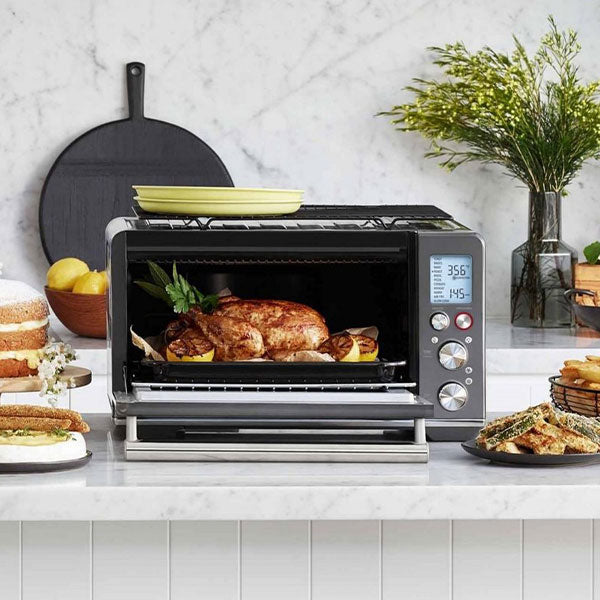
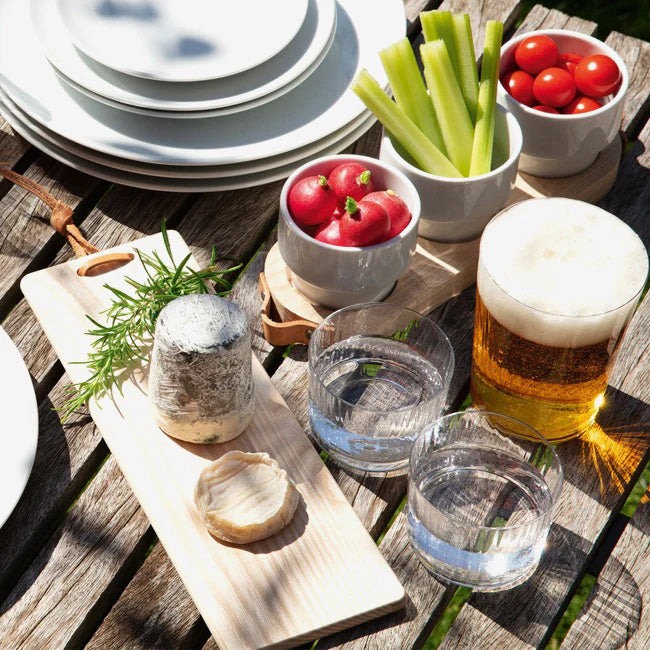

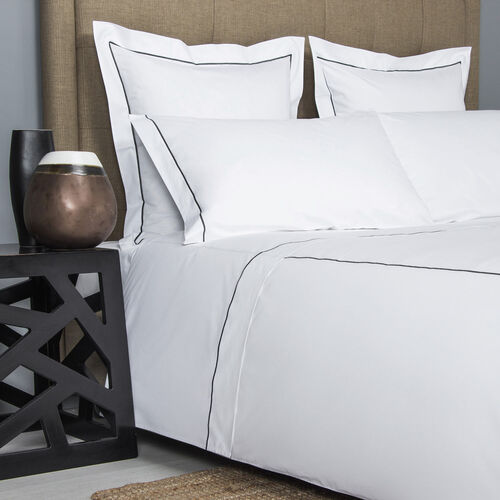

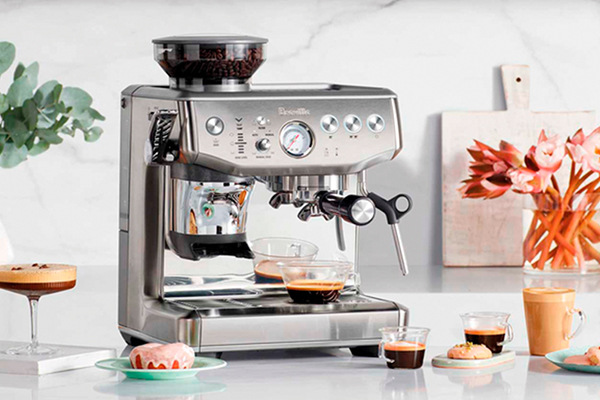










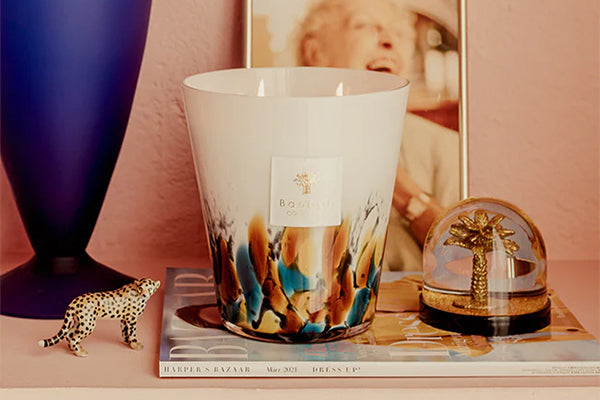










Leave a comment